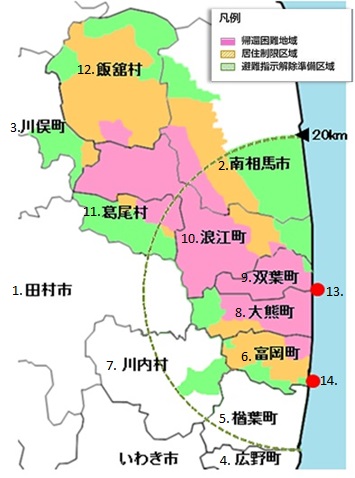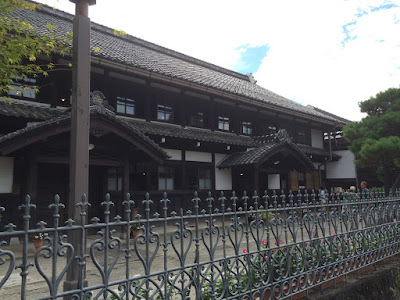
The Great Tokyo Air Raid on March 10, 1945 from Wikipedia Commons public domains
On the day following my business trip to Tokyo, I visited The Center of the Tokyo Raids and War Damage. I learned the following.
The scale of the Great Tokyo Air Raid
According to the contents of The Center, the US carried out its bombing raids on 120 of Japanese cities. The death tolls were 410,000 including atomic bombs / 200,000 excluding atomic bombs / 100,000 in one night of the Great Tokyo Air Raid, on March 10, 1945. That means the amount of the victims of the Great Tokyo Air Raid accounted for a half of all victims of normal bomb air raids in Japan.
cf. TIME - A Forgotten Horror: The Great Tokyo Air Raid
The contents of the Center

Many photos are displayed in the Center. The most shocking ones were as follows; (from Wikipedia Commons public domains)
-burned bodies
-burned bodies of a mother and her baby. Mother's back wasn't burned because of having carried her baby.
The Center has a good collection of data, chart and maps. I appreciate that the collection includes not only Tokyo but also ther places in Japan, as well as victims of non-Japanese.
- The records of air raids all over Japan
- The records of air raids in other countries, for instance, Dresden, Berlin, Hong Kong and Guernica.
- The records of air raids that Japan did (Chongqing, China)
- The records of Korean victims in Japan
Other Exhibits
- goods for air defence among regidents- burned cap of a baby
- melted dishes sticking a roof tile
- a miniature of a room of standard home at that time
- leaflets of the US airborne propaganda (The Japanese government prohibited to pick such leaflets out, however, some of them remain. The contents of them were interesting. They were well-informed about Japan and Japanese history but too logical for Japanese people, I think. I think that Japanese people have tendencies to feel strongly logical explanations as offensive pursuits.) ( To be clear, personally I love logical explanations.)
- Things related children education, for example textbooks, magazines and posters. You can see a big change at the end of the war.
- many others
Curtis Emerson LeMay
At a small video booth, I watched the TV program about the Air Raids, which was broadcast by NHK (Japan's public station) in 1978/
The TV crew visited the mansion of Curtis Emerson LeMay, who was the planner and the commander of the Great Tokyo Air Raids. When I saw the scene, I remember the movie "13 days" describing the 1962 Cuban Crisis. In the movie, LeMay (of course an actor played as him) appeared as the top of the US Air Force. I presumed that one of the reasons why he got to the top was the success of the Tokyo Raids. (By the way, LeMay insisted on the air raids to Cuba at the Cuban Crisis. If President Kennedy accepted LeMay's argument, WWIII would have broke out, I think.)
LeMay said to TV crew of NHK, "I have nothing to say for Japanese reporters","No interviews" and "You may film my medals."A glass cabinet appeared. It is the showcase of his many medals. One of them is the one from the Japanese government in 1964. Why did the government give the medal to the man who commanded the massacre its citizens? The reason why was his cooperation to build Japan Air Self-Defense Force.
After watching the program, I checked this award out. When the government decided on the award, many diet members and citizens, including victims of the Air Raid, were against that. The Prime Minister Eisaku Sato (Liberal Democratic Party) gave an account to them, "Now, Japan has a friendly relationship with the US. If a US person earned an achievement, it is natural to reward for that, in spite of the past." I think that this incident is one of the symbols of the LDP's policy of "subservience to the US".
cf. Related Post; Why is the US military in Japan?
Meanwhile, the Showa Emperor didn't give the medal to LeMay directly, despite in the ordinary course of decoration events the Emperor gave medals directly to receivers.
The couse of the damage spreading
After learning above in the Center, I looked over the fire protection policy at the time of WWII as follows;
-In 1937, the Japanese government released the Guideline of Air Defense. It contained the principle "In the event of an air raid, never evacuate except for old people, children and sick people.
-In 1941, The Air Defense Law released, including "prohibit to evacuate" and "duty to fire extinguishing" This law was never changed till the end of the war.
-After the Great Tokyo Air Raid, newspapers said, "Never Run, Guard", "Protect Our Homeland"
Why did the government release such a policy? Was it better a policy of evacuation in order to keep soldier power and labor power than the "non-evacuation" policy? The committee of The Air Defense Law answered on Nov. 20, 1941, "The damage won't be massive. We have to be more afraid of confusion among citizen and corruption of people's will to accomplish the war than the real damage."
My opinion
The leader of the Great Tokyo Air Raid was the US Air Force. Therefore, the US Air Force at that time had direct responsibility for the Air Raid. However, the Japanese Government also had a big responsibility because of its decision to provoke war with the US and its policy not to protect its citizens' lives. I, as a Japanese citizen, must bear watching the current Japanese Government intending to do some of the same actions.
Related posts
-How do Japanese think about the Pacific War?
-How do Japanese think about the Pearl Harbor attack?
-Why did Japan attack Pearl Harbor?
-What do Japanese people think of Korea and China? And unlike Korean and Chinese people, Taiwanese people tend to be fond of Japan,Why?
-Which was the best era in Japan? An interview with my grandparents who were born in the early 20th century
































